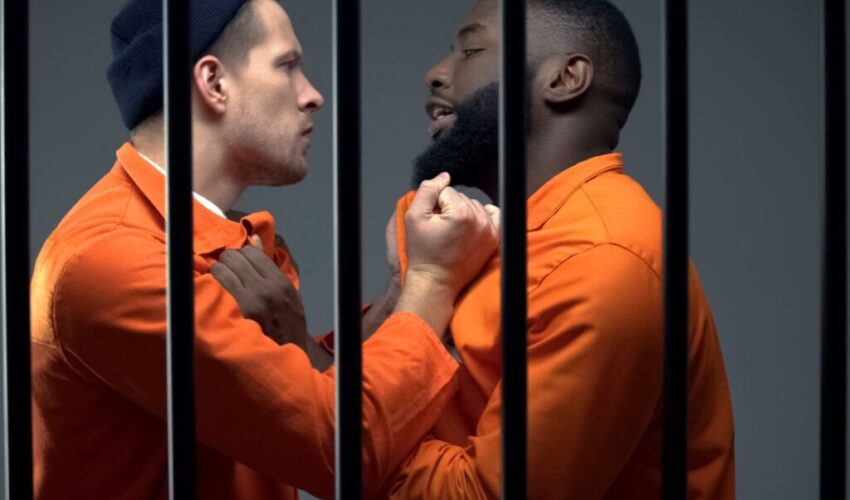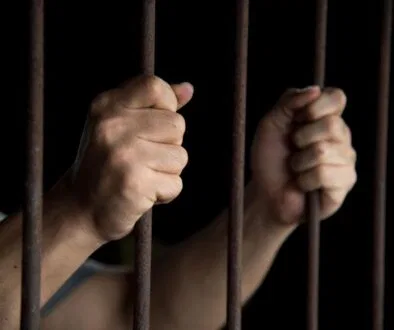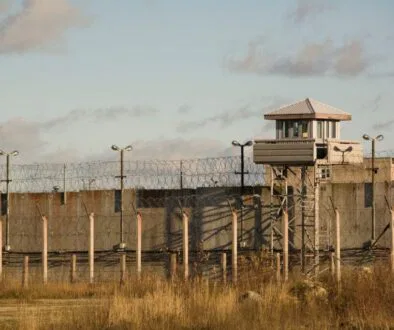Can We Still Solve Prison Overcrowding? Causes and Effects

Published May 29, 2023
Prison overcrowding refers to the situation where correctional facilities house more inmates than they were designed to accommodate. It has become an increasingly pressing issue in the United States, with correctional facilities operating at or above their capacity.
Overcrowding is a complicated issue due to various factors, such as increased crime rates, mandatory minimum sentences, war on drugs policies, and a lack of alternative sentencing options. Addressing this issue is crucial as it affects the well-being of prisoners, strains resources, and poses challenges for staff and administration.
Prison Overcrowding: What Causes It?
There are many reasons why prisons can become too crowded. Some people who have serious mental health problems or drug abuse end up in prison instead of getting the help they need. One reason for prison overcrowding in the US is that some people who have been in trouble before end up getting into trouble again. The war on drugs policies has also played a significant role, resulting in many non-violent drug offenders being incarcerated.
Another problem is that sometimes new legislations are made while the inmates are in prison, and when they get out, they don’t know about these new laws and end up breaking them by accident. As a result, they get arrested again and go back to prison.
When a person is released from prison, their punishment might not be completely finished. There are other things they have to do to make up for what they did wrong. For example, they might have to do community service or meet with a parole officer. They might even have to give a urine sample to check for drugs.
Prison Overcrowding Statistics

ADVERTISEMENT
Making things more complex is that the United States doesn’t have just one “criminal justice system.” Instead, the U.S. has many different systems at the federal, state, local, and tribal levels. Altogether, these systems have almost 2 million people in various types of places, such as state prisons, federal prisons, local jails, juvenile correctional facilities for young people, immigration detention facilities, jails in Native American territories, as well as military prisons, centers for civil commitment, state hospitals for people with mental health issues, and prisons in U.S. territories.
Prison Overcrowding Effects
Prison overcrowding has far-reaching effects on various aspects of the criminal justice system. The strain on resources, including limited space, insufficient staff, and inadequate funding, hampers the ability of correctional facilities to provide adequate care, security, and rehabilitation programs. Moreover, overcrowding negatively impacts prisoner well-being, leading to increased violence, mental health issues, and limited access to healthcare and educational opportunities. The challenges faced by staff and administration in maintaining safety and order within crowded facilities further worsen the problem.
Prison Overcrowding: Any Solution?
Over the years, several solutions have been attempted to address prison overcrowding, but many have proven ineffective. For example, expanding prison infrastructure while providing temporary relief is a costly and unsustainable approach. Privatization of prisons has also been implemented, but critics argue that profit-driven motives may compromise the quality of care and rehabilitation services. Similarly, three-strikes laws and longer sentences have not effectively reduced overcrowding and have contributed to the increasing prison population.
Possible Solutions
Despite the complexities, successful initiatives have been aimed at reducing prison overcrowding. Sentencing reform examples, such as implementing alternative sentencing options for non-violent offenders, have reduced incarceration rates without compromising public safety. In addition, various community-based programs focusing on reentry and rehabilitation have successfully supported former inmates in rebuilding their lives and reducing recidivism rates.
Comprehensive Reform Measures
Implementing effective solutions to prison overcrowding faces several challenges and roadblocks. First, public opinion and political resistance to criminal justice reform can restrict the adoption of evidence-based policies. Additionally, more funding and competing budget priorities are needed to implement comprehensive reform measures. Finally, structural issues within the criminal justice system, such as racial disparities and the over-reliance on incarceration, must be addressed to bring about meaningful change.
To effectively address prison overcrowding, collaboration among stakeholders is crucial. The involvement of lawmakers, criminal justice professionals, advocacy groups, and the community can lead to comprehensive reform efforts. In addition, investing in prevention and intervention programs that address the root causes of crime can reduce the number of people entering the criminal justice system. Policy changes and legislative action are also necessary to implement evidence-based practices, promote rehabilitation, and create a fair and just system.
Conclusion
Prison overcrowding remains a significant challenge in the United States, but it is a problem that can be solved through comprehensive and evidence-based approaches. By reevaluating sentencing policies, expanding alternative sentencing options, and investing in rehabilitation and reentry programs, we can alleviate the strain on correctional facilities, improve prisoner well-being, and promote successful reintegration into society. Stakeholders must come together and implement reforms prioritizing humanity, justice, and public safety.
Reduce Your Jail Call Costs By Up To 90% Per Minute With GlobalTel
GlobalTel’s inmate calling service lowers jail call per minute rates by up to 90% for jail calls from US facilities. Sign up now and use the special jail call phone number we create for you to eliminate the long distance jail call fees. Try GlobalTel for only $45.99 for 90 days. Make US/domestic and international jail calls at the local rate and stay connected to your incarcerated loved ones for less. Learn more about how to sign up for calls from inmates here.

This Content Is Fact Checked
Our esteemed team of specialists has thoroughly validated the accuracy of this information. Discover further details about the rigorous editorial guidelines for our website here.
ADVERTISEMENT

About The Author
Krizzia Paolyn is an SEO Specialist with a bachelor’s degree in Psychology. It has always been her passion to share her voice, and at the same time, to encourage other people to speak up.




